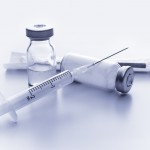
Dolly Sud writes her debut elf blog on a recent retrospective analysis, which compares dose changes of risperidone and aripiprazole with patients’ individual genotype.
[read the full story...]
Dolly Sud writes her debut elf blog on a recent retrospective analysis, which compares dose changes of risperidone and aripiprazole with patients’ individual genotype.
[read the full story...]
Joanne Wallace considers a recent health technology assessment on the risks and benefits of psychotropic medication in pregnancy, which supports previous associations between valproate and adverse child outcomes.
[read the full story...]
This review of IV midazolam for treating children and adolescents only identified 11 studies (5 RCTs, 6 non randomised). No serious adverse events were reported but there was a generalised inconsistency in side effect reporting. Consequently the call for better side effect reporting.
[read the full story...]
Unfortunately dental caries remains a significant problem in children with some young children requiring multiple procedures. Traditionally this was managed with general anesthesia, increasingly sedation and behaviour management are seen as potential alternative approaches and a 2010 guideline from the National Institute for Health and Clinical Excellence (NICE) suggested that midazolam could be used for [read the full story…]

Local anaesthetic use is widespread in dentistry and while lidocaine has been in use for more than 50 years an increasing number of agents are now available. The aim of this study was to analyze adverse drug reactions (ADRs) associated with local anesthetics (LAs) and to characterize the safety profile of LAs in clinical application. [read the full story…]